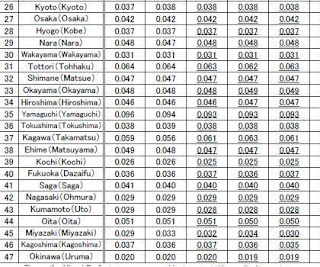Various reasons have kept people in their homes--some cite chronic health conditions while others say the evacuation centers where they took shelter have closed. Many people are living on the second floor of their home, as the first was flooded by tsunami.
Even local governments do not have a full picture of such residents' living environment, and experts warn that sanitary conditions inside the houses will deteriorate in the upcoming rainy season.
Transport company operator Isao Sato, 70, is living with his wife, Kazuko, 62, on the second floor of their house in the Minato district of Ishinomaki, Miyagi Prefecture. Many houses were damaged, some severely, by the tsunami in this seaside district.
Isao and Kazuko removed the mud deposited by the tsunami, which submerged the first floor. However, the ceiling was severely damaged, its heat-insulating materials exposed.
The couple did not go to a shelter because of Isao's chronic rheumatism. He gives himself an injection twice a week and warms his body by a stove even during daytime.
"If I go to a shelter in my condition, we'll just inconvenience other people," Isao said.
His house was judged by the city government to be essentially "destroyed." It trembles and makes loud noises when aftershocks hit.
The Satos sleep in their clothes every night. When they receive quake warnings on their cell phones, they evacuate to the second floor of a large commercial building about 300 meters from their house. "We haven't been able to sleep well because of anxiety," Sato said.
Norihiko Takahashi, 48, farmed wakame seaweed and scallops in Minami-Sanrikucho, Miyagi Prefecture. He left a shelter that closed May 4 and returned home with his wife and eldest daughter.
At one point they stayed in a minshuku inn, but they could not secure a room just for their family.
The Takahashis now live on mats laid on the second floor of their severely damaged house. They have no electricity or tap water, and are living on rationed bread, onigiri rice balls and drinking water obtained from a nearby distribution center.
"We'll live here until we're chosen in the lottery for a temporary housing unit," Takahashi said. "I'll repair this house, even if it's just a little bit at a time."
Read the whole story
http://www.yomiuri.co.jp/dy/national/T110522002543.htm
・Here are the latest reports on the quake victims in Japan.
http://hearthevoicefromjapan.blogspot.com/
How can we help?
・Save the Children, Japan quake victim
www.savethechildren.org/japanquake
OR;
http://japanearthquakeanimalrelief.chipin.com/japan-earthquake-animal-rescue-and-support/
・Save the Children, Japan quake victim
www.savethechildren.org/japanquake
・Japan Earthquake Animal Rescue and Support Website
http://www.facebook.com/pages/Japan-Earthquake-Animal-Rescue-and-Support/207835229228979OR;
http://japanearthquakeanimalrelief.chipin.com/japan-earthquake-animal-rescue-and-support/
・Japanese Red Cross
http://www.jrc.or.jp/english/relief/l4/Vcms4_00002070.html




